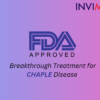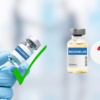Managed Access Programs (MAPs) serve as a vital bridge between clinical trials and the commercial availability of medications, offering eligible patients access to potentially life-saving treatments before official market approval. Also referred to as Compassionate Use or Expanded Access programs, MAPs play a crucial role in addressing the unmet medical needs of individuals with life-threatening, long-lasting, or seriously debilitating illnesses. These programs provide hope and treatment options to patients who are unable to enroll in clinical trials or lack access to authorized therapies for their conditions.
Let’s delve into the details of Managed Access Programs, their history, intent, implementation in India, the role of government bodies like CDSCO, prerequisites for participation, and the therapeutic segments covered under MAPs.
Understanding the Managed Access Program
Managed Access Programs (MAPs) offer a solution for patients suffering from severe, life-threatening, or debilitating illnesses by providing access to investigational medicines that are still undergoing the marketing authorization process. These programs cater to patients who are unable to participate in ongoing clinical trials but could benefit from early access to potentially life-saving treatments. In such cases, physicians may seek to administer investigational medicines to their eligible patients, offering hope and potential relief even before regulatory approval is obtained.
Managed Access Programs (MAPs) encompass a range of initiatives, including
- Compassionate Use
- Expanded Access
- Named Patient Supply
- Special Access Schemes/Programs
- Autorisations temporaires d’utilisation (ATU), and similar programs
These programs are designed to facilitate access to investigational medicines for patients facing serious medical conditions, offering avenues for treatment beyond traditional clinical trial participation.
Types of Treatments Covered by Managed Access Programs
Investigational Medicines:
- Managed Access Programs (MAPs) grant access to investigational medicines still undergoing clinical trials and awaiting regulatory approval.
- These medicines are available to eligible patients who lack access to approved therapies and are dealing with critical health conditions.
Compassionate Use:
- Also referred to as expanded access or patient assistance programs, MAPs facilitate early access to investigational products for patients with significant unmet medical needs.
Named Patient Use:
- Within MAPs, named patient use allows individual patients with serious or life-threatening diseases to request access to specific investigational medicines when no satisfactory alternative therapy is available.
Individual Patient Requests:
- MAPs may entertain individual patient requests for access to investigational medicines, provided the patient meets specific eligibility criteria, including the absence of satisfactory treatment alternatives and a favorable benefit-risk profile of the investigational medicine.
Managed Access Cohort:
- In certain instances, MAPs involve administering investigational medicines to a group of patients with the same disease under a predefined treatment protocol, ensuring controlled access and monitoring.
History
The Managed Access Program (MAP) has a rich history shaped by evolving healthcare needs and regulatory changes. Here’s a concise timeline:
1960s: The Kefauver Harris Amendment of 1962 was a response to the thalidomide scandal, establishing a drug approval process ensuring safety and effectiveness. Informal Compassionate Use programs emerged during this time to address concerns about timely access to life-saving medication.
1970s: The U.S. FDA introduced the Group C Cancer Investigational New Drug Program, allowing oncologists to use certain investigational cancer drugs outside of clinical trials. This laid the groundwork for formal Expanded Access policies.
1980s: The AIDS crisis spurred formalized Compassionate Use pathways, prompting the FDA to expedite drug review and approval processes. Patient advocacy groups emerged, influencing access to experimental drugs.
1987: The FDA introduced Investigational New Drug (IND) application regulations, allowing patient access to investigational drugs outside of clinical trials, categorized into Investigator IND, Emergency IND, and Treatment IND.
1988: The “Fast-Track” program was created, expediting access to drugs for life-threatening conditions by bypassing certain clinical trial requirements.
1992: The FDA implemented “Accelerated-Approval” regulations, revising endpoints to focus on patient benefits rather than clinical outcomes, expediting access to promising drugs.
1994: France established the Temporary Authorisation for Use (ATU) process, providing early access to promising therapies for high unmet medical needs.
2000s: Patient advocacy efforts, such as the Abigail Alliance lawsuit, led to revisions in Expanded Access regulations, ensuring broad and equitable patient access to investigational drugs.
2009: The FDA revised regulations, creating three categories of access: Single Patient IND, Intermediate Sized Patient Population IND, and Treatment IND or Protocol, aiming to streamline access to investigational drugs while maintaining safety standards.
2014: Colorado pioneered the Right to Try Act, granting terminally ill patients access to investigational drugs outside FDA oversight. This sparked similar legislation in other states and later at the federal level, though critics feared it undermined drug development standards.
2016: The FDA simplified Expanded Access paperwork and updated charging regulations. PRIME in Europe expedited access to promising therapies, while the Ebola crisis prompted Expanded Access Programs.
2017: The FDA clarified adverse event data handling in Expanded Access and launched an online resource. EURORDIS advocated for broader Compassionate Use access in Europe.
2018: The Right to Try Act was signed into law, providing an alternative pathway to Expanded Access. The FDA emphasized the value of Expanded Access data in regulatory decision-making.
2019: Project Facilitate streamlined Expanded Access requests for oncology patients. The FDA encouraged post-trial access to investigational drugs.
2020 and beyond: Public health crises like COVID-19 highlighted the importance of Expanded Access. Stakeholders continue to shape and refine Expanded Access mechanisms to benefit patients across various disease areas.
This timeline highlights key milestones in the development of Managed Access Programs, reflecting evolving patient needs, regulatory changes, and advancements in healthcare access.
Purpose Of Managed Access Program
The primary intent behind MAPs is to provide timely access to investigational medicines for patients with severe health conditions when no satisfactory alternatives exist. By offering early access to promising treatments, MAPs aim to address critical medical needs and improve patient outcomes.
Managed Access Programs in India
The regulatory landscape surrounding Managed Access Programs (MAPs) can exhibit considerable variation, influenced by diverse interpretations and regulatory frameworks across different jurisdictions. In India, MAPs adhere to stringent regulatory controls to guarantee that access to unauthorized medicines occurs only under specified conditions and compliance standards.
Eligibility Criteria and Evaluation Process in Managed Access Programs
In all instances, the request for participation in a Managed Access Program must be unsolicited, and certain criteria must be met. Patients must suffer from a life-threatening, long-lasting, or seriously debilitating illness, with no satisfactory authorized therapies currently available for treatment. Additionally, they must be ineligible to enroll in an ongoing clinical trial. The medicine or therapy sought must be undergoing clinical trials or have initiated the marketing-authorization application process.
Before participation, the benefit-risk profile of the product is rigorously evaluated based on the latest available data, ensuring it aligns favorably with the intended use and targeted indication. Managed Access Programs typically operate on a Named Patient basis, allowing treating physicians to submit individual requests for specific patients. These requests may involve drugs that are approved but not yet commercially available in the patient’s country, approved and accessible in one country but not in the patient’s country, discontinued locally but available elsewhere, or experiencing shortages locally but available elsewhere.
Central Drugs Standard Control Organization (CDSCO)
The Central Drugs Standard Control Organization (CDSCO) in India oversees Managed Access Programs, ensuring compliance with local laws and ethical standards. Through a robust regulatory framework, CDSCO maintains stringent quality standards and procedural protocols, safeguarding the interests of patients while upholding safety and efficacy standards in providing access to investigational treatments.
Regulatory Oversight
- CDSCO establishes and enforces drug standards, approves clinical trials, and rigorously monitors the quality of imported pharmaceuticals to uphold compliance with safety and efficacy requirements prior to public dissemination.
Granting Licenses
- Acting through its Central Licensing Authority (CLA), CDSCO issues licenses for specific categories of critical medications, such as blood products and novel therapeutics, in strict accordance with the Drugs and Cosmetics Rules, 1945.
Quality Assurance
- CDSCO is dedicated to enhancing healthcare standards and consumer awareness by modernizing regulatory practices and fostering a science-driven framework that supports research and development initiatives within India’s pharmaceutical landscape.
Collaboration and Post-Market Surveillance
- CDSCO collaborates with governmental and non-governmental entities alike to fortify healthcare infrastructure and elevate consumer consciousness.
- Rigorous post-marketing surveillance activities are conducted to continually monitor the safety and efficacy of pharmaceuticals already cleared for commercial distribution.
Under Rule 33A of the DC Rules, government hospitals or autonomous medical institutions are authorized to import specific drugs, even if they are prohibited under the DC Act. This provision aims to facilitate the treatment of patients with life-threatening diseases or serious permanent disabilities. Additionally, Rule 36 permits the importation of small quantities of drugs for personal use, either as part of personal baggage or through other means, subject to certain conditions and approvals.
Through these meticulously orchestrated regulatory, quality assurance, collaboration, and surveillance endeavors, CDSCO ensures that patients have unfettered access to pharmaceuticals that are not only safe and efficacious but also compliant with the highest standards of quality within the pharmaceutical sector.
Pre-Requisites for Managed Access Program
Based on the available information, managing access to medicines under a program like the Managed Access Program (MAP) involves several pre-requisites.
- Firstly, requests for medicine access must originate from treating physicians and undergo individual assessment to ensure they meet specific criteria. These criteria typically include the severity of the patient’s condition, exhaustion of treatment options, and the anticipated benefit-risk ratio.
- Additionally, geographical considerations play a role, with patients needing to reside in countries where the pharmaceutical company plans to seek regulatory approval and supply the medicine.
- Compliance with local laws and regulations is essential, with physicians required to adhere to specific requirements related to patient confidentiality, data privacy, and adverse event reporting.
- The request process involves designated portals for approved medicines and email submissions for investigational ones, all aimed at ensuring structured and compliant access while prioritizing patient safety and ethical standards.
Conclusion
In summary, adherence to the outlined prerequisites ensures the effective and ethical management of access to medicines under programs like the Managed Access Program (MAP), particularly within the specified therapeutic segments. By requiring unsolicited requests from treating physicians, considering specific criteria for patient eligibility, addressing geographical considerations, ensuring compliance with local laws, and implementing a structured request process, MAPs can provide access to medicines in a manner that prioritizes patient safety, regulatory compliance, and ethical standards.
Written By
Aswini PriyaMedical Content Writer
Reviewed By
Dr. AnchalMedico Expert
Last Updated
19 Mar 2024 | 12:10 PM (IST)










